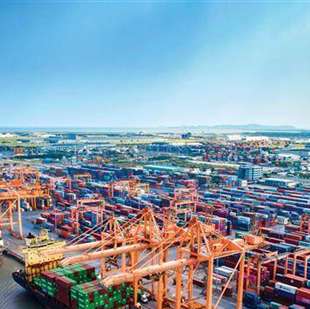A Guide to Joycasino Bonuses and How to Make the Most of Them

Discover Joycasino bonuses and learn the rules for using them effectively. This comprehensive guide covers everything you need to know.
Your business has received a larger-than-normal order, implying you need to figure out how to ship products quickly. Will traditional package delivery cut it? Probably not.
Ideally, shipping by freight helps deliver items on time and in good condition because the approach typically facilitates the movement of larger or bulkier items over longer distances. And with a logistics partner such as ArdentX, your business can tap into a vast network of carriers, enabling you to ship items securely. To learn more about the nuances of freight shipping, keep reading.
Freight is basically cargo shipped by land, sea, or air. It may include vehicles, manufactured goods, raw materials like oil and natural gas, or oddly shaped items. In the United States, freight is usually shipped via truck, rail, barge, airplane, or ship. As you've noted, it typically involves large volumes of cargo weighing over 150 pounds. To qualify as freight, the item in question should also exceed 108 inches in length or be over 160 inches in combined length and girth.
Likewise, consolidated items that necessitate transport on a pallet fall in this category. In contrast, parcels are usually smaller, typically sent via courier services like UPS or FedEx. So, while freight applies to larger-scale shipments, parcels are perfect for smaller, more individualized deliveries.
Ergo, freight shipping involves the transport of cargo via the aforementioned means to a specific destination, either domestically or internationally. For eCommerce businesses, freight shipping is critical to their operations, as they need to get products from their source to customers efficiently.
The modes of transport used to complete the shipment depend on factors such as weight, size, fragility, urgency of delivery, and budget. Nonetheless, shippers commonly rely on one or a combination of delivery modes to move freight. Case in point, a shipper who sells their products overseas may rely on trucks to get their products to the port, ships to transport them across the ocean, and more trucks to shuttle their items to customers. Or, they may use a train to move products across the country.
While the transport of packages and cargo appears simplistic, the process is quite complex. When shippers use freight services, they usually book the shipment with an intermediary or a third-party logistics provider (3PL). The intermediary handles the paperwork and communicates with carriers to ensure the products arrive at their intended destination.
The 3PL usually scouts out the best option for a shipper. They also verify freight classifications for accuracy. Then, they book a carrier suitable for the job.
Some logistic partners help their clients by preparing shipments. For instance, they may package items securely, consolidate cargo from multiple sellers, inspect products for damage, arrange pick-up, or track the shipment.
Upon picking up the shipment, they liaise with carriers to transport it to its final destination according to the agreed service terms. The shipping partner also handles customs clearance, if applicable. This might involve submitting documentation and paying applicable duties or taxes - the shipper is usually responsible for these costs.
What drives the popularity of freight shipping as a delivery solution? Well, shippers rely on it for some of the reasons listed below:
Freight shipping is a diverse subject we can't exhaust in one sitting. Nonetheless, this primer tackles the basics, providing an overview of the process and its upsides. If this write-up piques your interest in the subject, consider exploring our other freight shipping resources.
Discover Joycasino bonuses and learn the rules for using them effectively. This comprehensive guide covers everything you need to know.
In the ever-expanding digital landscape, Google Drive stands as a reliable fortress for storing and managing our essential files. However, there comes a time when the need arises to copy from one Google Drive to another - be it for personal reorganization or collaboration on a different platform.
Buy 50 TikTok Likes: Imagine the thrill of your TikTok clips accumulating likes in significant numbers, from hundreds to millions. Experience the increase in engagement, be part of a lively community centered around your content and explore limitless potentials that open up with just 50 likes on TikTok.
Your business has received a larger-than-normal order, implying you need to figure out how to ship products quickly. Will traditional package delivery cut it? Probably not.
Bruce Springsteen is an iconic figure in the world of rock music, renowned for his energetic live performances that have captivated audiences around the globe. His concerts are a must-see experience for all music fans who seek to witness a master at work and feel the power of live music.
Snacks are now a famous culinary field, attracting a lot of people and especially young people. The snacks are always delicious, eye-catching, each year there are more new and unique dishes. Here, WebTech360 will bring you the most popular snack areas in the world.
You want to know about your love in the future? You want to know what kind of person your spouse will be when starting a new relationship? Listen to what the Tarot cards say about your love.
The mystery of the death of Argentina football legend, Diego Maradona is revealed
Booking air tickets online will help you get the cheapest airfare with many suitable flight options. In this article, we will show you how to book Jetstar flight tickets online quickly, conveniently.
Online air ticket booking is becoming very popular now, when booking online you will save time, take the initiative in the time and the ticket price is also cheaper than buying at an agent.
Guide to use Flight Simulator in Google Earth Pro to explore the fascinating world from above.
Just install Traveloka on your phone, you are free to book air tickets, book hotel rooms anytime anywhere without having to go directly to the transaction points. The way to book an online flight is also very simple and fast, anyone can use it.
Google Earth is one of the most powerful tools for exploring the earth and space right from your desktop. Knowing useful Google Earth tips will help you get the most out of this app.










